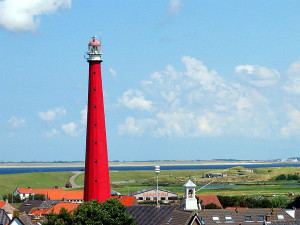Elevation 1 m (3 ft) Time zone CET (UTC+1) Local time Monday 1:48 PM | Demonym(s) Heldenaar Postcode 1780–1789 Population 56,308 (2016) | |
 | ||
Weather 8°C, Wind NE at 8 km/h, 85% Humidity Points of interest Dutch Navy Museum, Willemsoord - Den Helder, Marsdiep, Museum Reddingmuseum Dorus Rij, Brugdeel HrMs De Ruyter | ||
Port of den helder and den helder airport promo video 2015
Den Helder ( pronunciation ) is a municipality and a city in the Netherlands, in the province of North Holland. Den Helder occupies the northernmost point of the North Holland peninsula. It is home to the country's main naval base. From here the Royal TESO ferryboat service operates the transportation link between Den Helder and the nearby Dutch Wadden island of Texel to the north.
Contents
- Port of den helder and den helder airport promo video 2015
- Map of Den Helder Netherlands
- Population centres
- History
- Naval base
- Geography and climate
- Transport
- Local government
- Notable people
- In popular culture
- Film shot in Den Helder
- References
Map of Den Helder, Netherlands
Population centres
The municipality of Den Helder consists of the following cities, towns, villages and/or districts: Den Helder, Huisduinen, Julianadorp, and the hamlets Friese Buurt and De Kooy.
The major areas of Den Helder are Old Den Helder, Nieuw-Den Helder, and De Schooten. Nieuw-Den Helder was built in the 1950s, following World War II, when there was a great need for additional housing. De Schooten was constructed in the 1960s.
Dutch Topographic map of Den Helder (town), March 2014.
History
Huisduinen was the original older part of the city, whereas Helder itself was a nearby smaller hamlet. Due to its strategic location at the tip of the North Holland peninsula, multiple fortifications were built in the area. The area likely began being called Helledore ("Hell's Door" or "Hell's Gate", later on 'Helsdeur') because of the water between now Den Helder and Texel called Marsdiep. The current of the water was so strong many ships were lost. The name Helder may also have come from Helle/Helde, which means hill or hilly grounds, or from Helre, which means a sandy ridge.
Den Helder has played an important part in Dutch shipping. During the Dutch Golden Age, ships would be assembled near Den Helder and sail from there the world's oceans.
On 23 January 1795, the French captured 14 Dutch ships and 850 guns in the deepfrozen town's harbour. In 1799 the city was the target of the Anglo-Russian invasion of Holland.
During the 1820s, the North Holland Canal was dug from Amsterdam to Den Helder. The lighthouse Lange Jaap was built in 1877 and is the tallest cast-iron lighthouse in Europe, at 63.45 meters (208.2 ft).
Naval base
Den Helder was the site of a naval base as early as the 18th century. An Anglo-Russian invasion force landed at Den Helder in August 1799 and captured the Batavian navy there (see Battle of Castricum). French emperor Napoleon Bonaparte, visiting Den Helder in 1811, was impressed with the town's strategic location and ordered the construction of a fort (Kijkduin) and naval dockyards (Willemsoord). The docks were built during the years 1813-1827. In 1947, it officially became the Royal Netherlands Navy's main centre of operations. Den Helder continues to be the navy's main base today. The Royal Netherlands Naval College is also located in the city, as is the Dutch Navy Museum.
The old naval dockyards of Willemsoord, located in the north of the city, now house restaurants, a cinema, and other recreational facilities. The naval docks and administration have been moved to a new location further east.
Geography and climate
Den Helder is located on the tip of a lowland peninsula jutting out into the North Sea Because of this, Den Helder's climate is heavily moderated by the maritime environment. Also, Den Helder is the sunniest city in the Netherlands.
Transport
The town is served by two stations:
Den Helder can be reached by the following main roads:
These roads all have only two lanes. There's no highway leading to Den Helder.
Local government
The municipal council of Den Helder consists of 31 seats, which are divided as follows (as of 2014):
Notable people
In popular culture
The Frank Boeijen Groep song Haast (rust roest) contains the line " 's avonds in Den Helder". (English- Evenings in Den Helder)
The Rob de Nijs song Jan Klaassen de Trompetter contains the line "hij marcheerde van Den Helder tot Den Briel". (English- He marched from Den Helder to Den Briel)
